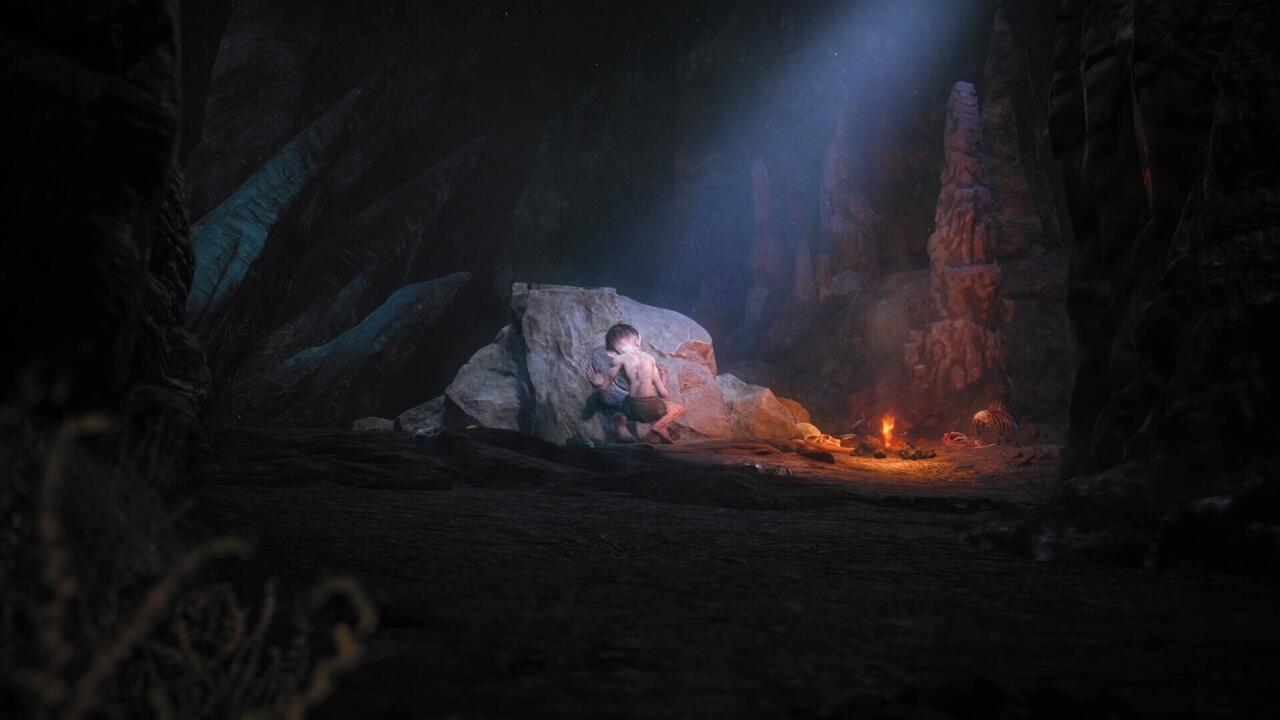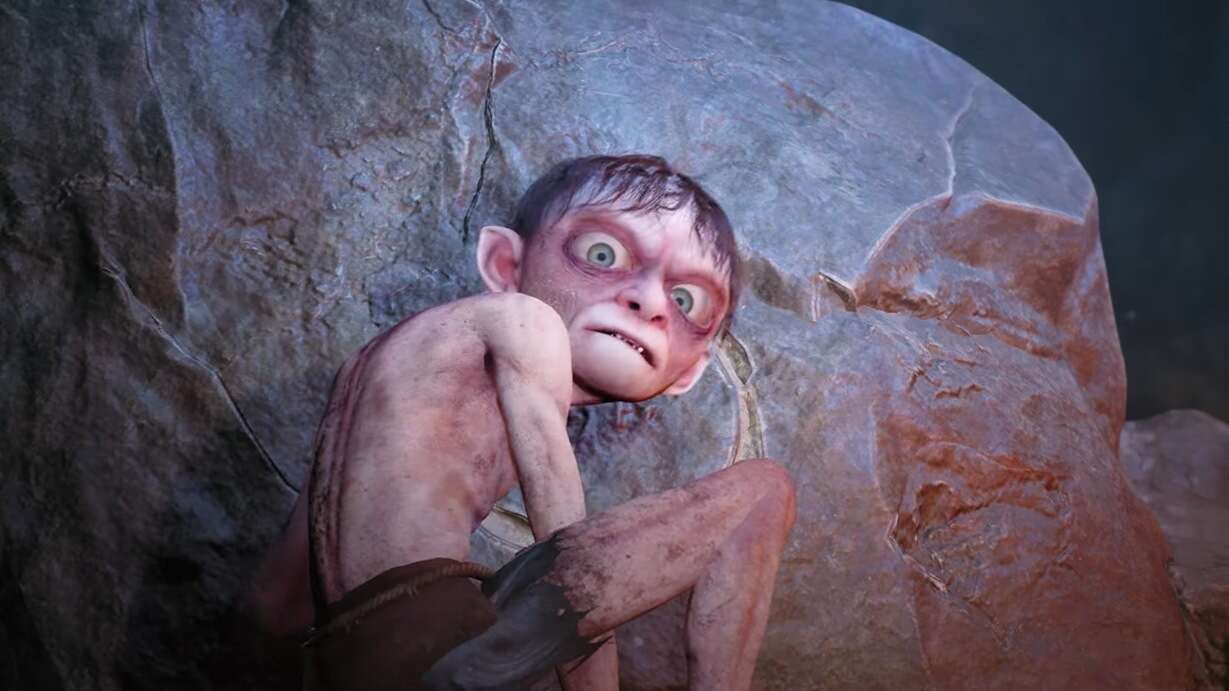The Lord Of The Rings: Gollum Review – We Don’t Wants It, We Don’t Needs It
When it comes to art, I’m something of a masochist. I listen to music that the average listener might describe as “unlistenable.” I relish in the skin-crawling cringiness of the major motion picture musical Cats. I gravitate toward games that make me beat my head against the wall, for better or for worse. However, every pain junkie has their limit, and The Lord of the Rings: Gollum pushed me to mine–and then some.
The long-delayed stealth adventure from Daedalic Entertainment, centered around one of Middle-earth’s most iconic (if not exactly likable) characters, does not simply miss the mark here or there: It’s an unbridled disaster of truly epic–like, Tolkien-level epic–proportions. Beyond its overly simple level design, jarringly dated graphics, and deeply uninteresting gameplay, The Lord of the Rings: Gollum is broken to the point where it’s nearly unplayable, making it one of the worst uses of a licensed property in recent memory.
The game begins in Cirith Ungol, the Orc-infested outskirts of Mordor, some 60 years after Bilbo Baggins stole the One Ring from our slimy, frail protagonist, Sméagol–or Gollum, as he’s come to be known. Taking place not long before the events laid out in The Fellowship of the Ring, the crux of the story is instantly recognizable to anyone even peripherally familiar with the series: Gollum must find Bilbo and take back his “precious” at any cost, while avoiding the wrath of Sauron along the way.
You control Gollum in third person (except when swimming, weirdly). Being barely capable of lifting a metal spoon, let alone wielding a weapon, combat is not the focus, save for occasional opportunities to sneak up from behind for a strangle-kill, which he’s somehow able to muster the energy for. Instead, the game revolves around all things stealth. You utilize relatively sparse climbable surfaces to creep around from above, crawl through the shadows to stay out of sight on ground level, and throw stones to knock out light fixtures or distract guards.
Before going any further, we need to address the elephant (or Mûmakil, if you will) in the room: In the state it was in at time of review, The Lord of the Rings: Gollum was not ready to be played. In my roughly 11 hours of playtime on “Performance” mode on a PlayStation 5, the game crashed over 120 times (yes, I counted; masochist, remember?), averaging about one crash every five minutes. After my 20th-or-so crash, I got the dreaded “save data corrupted” message, only to realize I’d lost half a day’s progress upon reloading. In multiple other instances, game-breaking bugs–such as a companion I was charged with protecting instantly dying over and over again for no discernible reason–forced me to restart entire levels, losing significant progress. Finally, during an especially tedious and time-consuming puzzle, the crashes became too frequent to possibly make it to the next checkpoint in time. Determined though I was to get through to the end and make these setbacks feel worthwhile, I threw in the towel at 40% completion, defeated.
After suffering through and starting a new game, overwriting the data from my original playthrough, I tried turning off a setting I had previously overlooked: “Gollum Hair Simulation.” Doing so significantly decreased the number of crashes, though it did not seem to have much of an effect on other major bugs throughout. All that this setting seems to do is make Gollum’s hair look a little bit greasier and more fluid, which–if you ask me–doesn’t exactly sound worth the near-constant rebooting. As such, I highly recommend making sure that this setting is turned off, if you decide to put yourself through this game.
Beyond these potentially game-ruining issues, The Lord of the Rings: Gollum is packed to the brim with all other sorts of bugs, ranging from hilarious to white-knuckle-frustrating. Sometimes, I loaded into checkpoints only to find myself stuck in the ground, before promptly dying in a disgusting gurgle. Other times, I got stuck in “crouch,” or became unable to move entirely, forcing me to restart the game. Cutscenes frequently end abruptly, cutting off the regularly out-of-focus NPCs mid-sentence. A harrowing escape scene will be set to dramatic music in one run, and then entirely silent the next. The list goes on.
Beyond its overly simple level design, jarringly dated graphics, and deeply uninteresting gameplay, The Lord of the Rings: Gollum is broken to the point where it’s nearly unplayable
Even in the rare instances when the game is humming along without a hitch, the graphics in The Lord of the Rings: Gollum are remarkably unrefined for a 2023 release. The environmental art design can be compelling from a distance, particularly in the hellish underground fortress of Barad-dûr, where you spend most of the first half of the game as a prisoner-slave. But up close, the vines, rock faces, and pits of fire that make up the world around you are mostly flat, lacking in detail, and sometimes just straight up blurry. Bubbles underwater only come into frame when you stand still, and appear as motionless, hand-drawn circles. Some of the cave art inspected in Gollum’s den early in the game looks like it could have literally been drawn in Microsoft Paint. The NPCs look more on par with characters you’d expect to see in 2011’s The Lord of the Rings: War in the North than a current-gen game. And while Gollum himself is comparatively impressive in terms of art and animation, his cartoonishly cross-eyed style won’t be for everyone, and even he often appears out of focus. Again, the list goes on.
Daedalic has said some of these issues will be addressed with a day one patch. What will be fixed remains to be seen, but in its pre-patched state, this game is simply too far from finished to suggesting anyone play it, let alone considering its $60 price tag.
Now, technical achievement isn’t the sole determining factor when it comes to fun. There are plenty of examples of games that were riddled with issues upon release, but, carried by the strength of their gameplay, still managed to be an overall enjoyable experience. Unfortunately, The Lord of the Rings: Gollum is not an example of such a game. Its most glaring gameplay issue is its mission design. Sans a few slightly more in-depth objectives at big story moments, the majority of your tasks amount to some version of, “Follow the person!” “Collect the thing!” or, in one case, literally “Stand in line!” It would be one thing if these missions took place in a large, open-world environment, but instead, the majority of them in the first half of the game are set in the cramped confines of Barad-dûr, where you’re forced to repeatedly revisit many of the same locations in order to progress the story. The game is entirely linear, so the path to the next checkpoint always feels on rails, leaving no real room for exploration or outside-the-box thinking.
The cookie-cutter nature of the missions is not offset by a particularly fun or inventive traversal system, either. Getting from point A to point B almost always involves utilizing the same small set of tools–namely, climbing a predefined path on a wall, shimmying along ledges, and jumping from monkey bars. It feels like they cherry-picked a few of the most basic climbing mechanics from the games that popularized them, but failed to contextualize them with the variety or freedom necessary to make the experience rewarding.
When it comes to stealth, the gameplay is no less basic, mostly thanks to the befuddling incompetence of the enemy AI. Crawling through the shadows is enough to keep you hidden from the Orc guards. They may even notice you making your way across a room and go to investigate, but if you enter a shadow in time, you’ll be fully invisible to them, even when they are no more than a few inches away. Occasionally you’ll need to remove a light source to make it through, which the Orcs respond to by walking over, staring at it for a moment, and then returning to their path without turning it back on.
Though the gameplay is, more often than not, too easy, you are significantly hindered by Gollum’s stats. Your stamina, which is required for running and climbing certain objects, depletes quickly and reloads at a snail’s pace. Your health is similarly fragile; you take fall damage from sometimes hilariously low heights, and resources to replenish HP (worms and mushrooms, mostly) are few and far between. There are no new abilities or upgrades to unlock in the game. While it is a potentially interesting idea to reflect Gollum’s withered nature in the character’s lowly base stats, it ends up playing out more like an annoyance than a meaningful storytelling device.

The story is, however, the best thing that The Lord of the Rings: Gollum has going for it, and it’s backed by an appropriately epic soundtrack. Moments of dialogue between Gollum and his alter-ego Sméagol, where you must convince the other personality to go along with a decision, serve as interesting glimpses into the internal moral struggle of the character that made him so archetypal in the first place (even if the voice acting guiding these scenes pales in comparison to Andy Serkis’ iconic portrayal in the films). A handful of new characters add some context and texture to what is one of the least explored periods of time in Tolkien’s series.
Even so, they could have gone much deeper, and the game surrounding the story is ultimately too much of a distraction for it to feel truly resonant. Daedalic might have been better off investing more resources into enriching the story and approaching the game as one of its hallmark point-and-click adventures, instead of shooting for the stars. As it stands, there may be enough here for lore-hungry diehard fans of the series to sink their teeth into, but for the average player, the story can’t shoulder the weight of the rest of the game.
Much like Gollum’s quest for the One Ring, my quest to complete The Lord of the Rings: Gollum was full of endless setbacks, impossible odds, and ever-increasing levels of madness. And, like Gollum, my journey was doomed from the start. So if the developers’ main goal was to really put you in the shoes of such a pitiful, unloveable character faced with constant pain and suffering at every turn, they were at least successful at that.
For all the latest Games News Click Here
For the latest news and updates, follow us on Google News.

